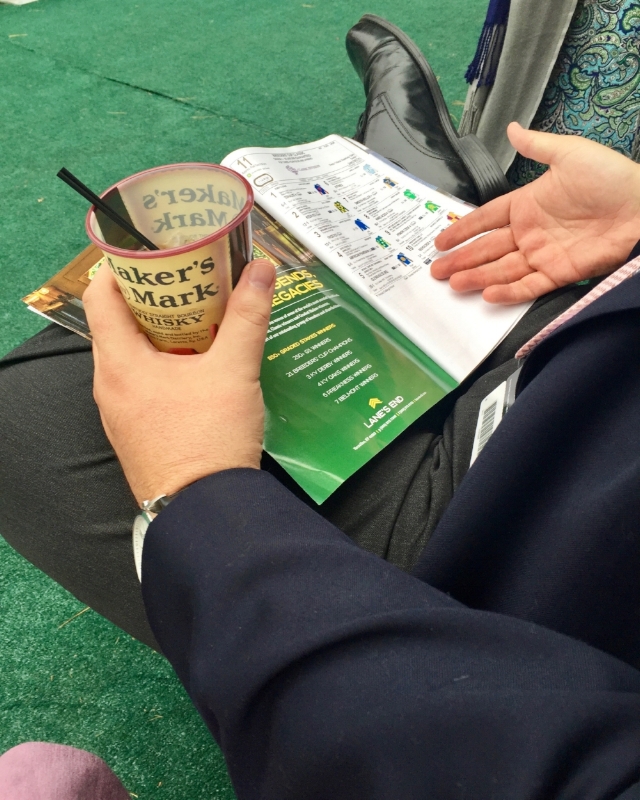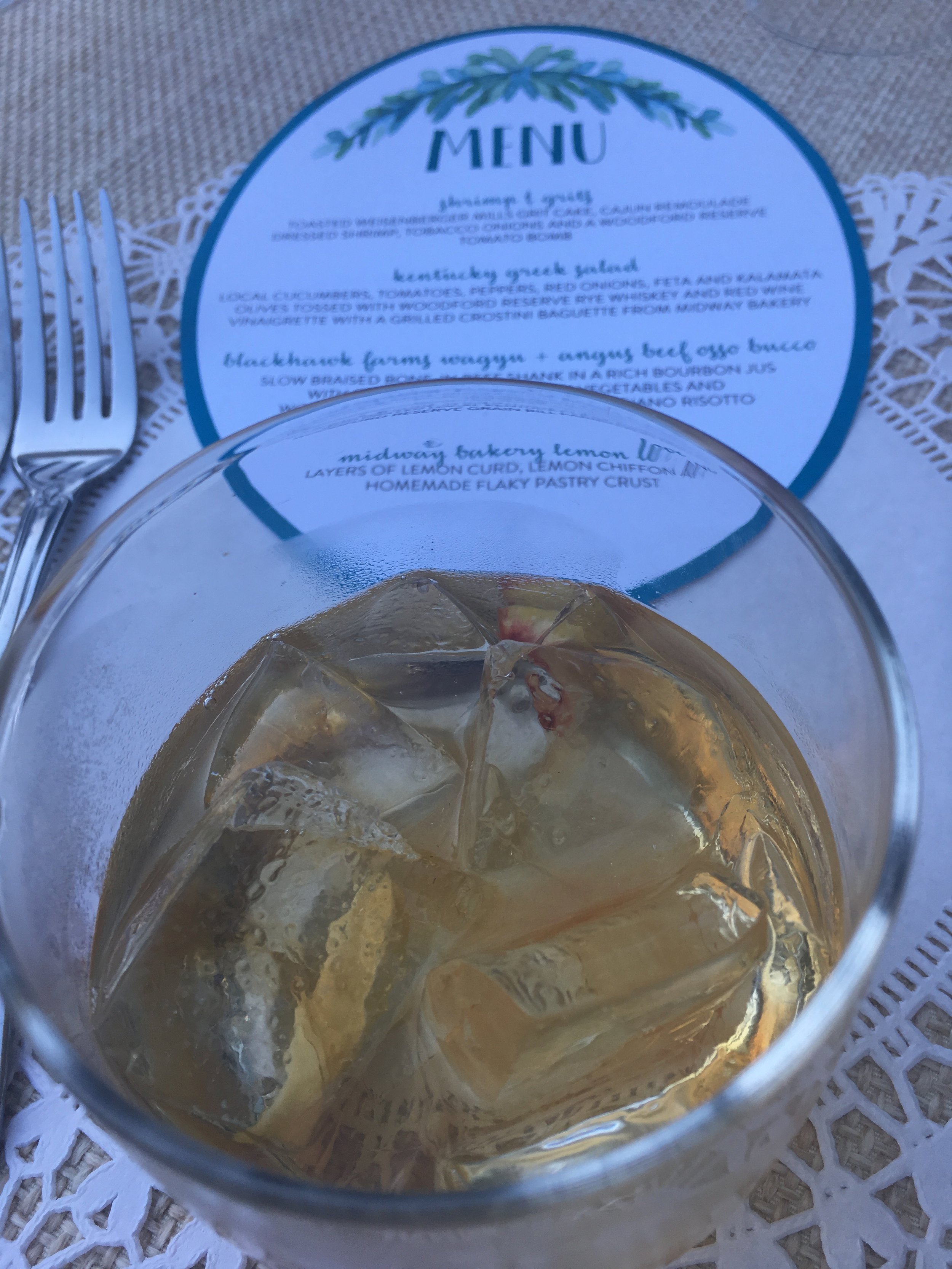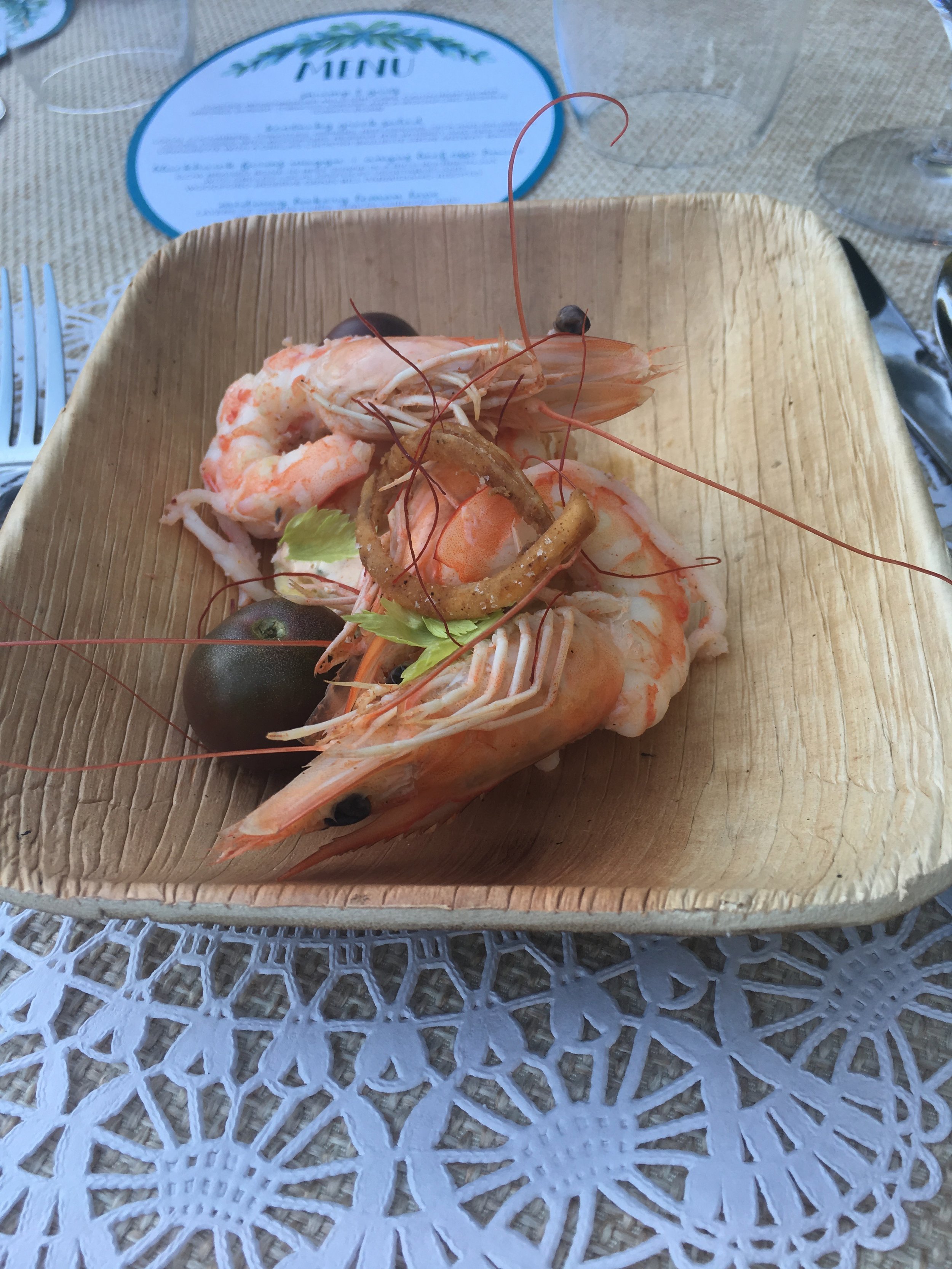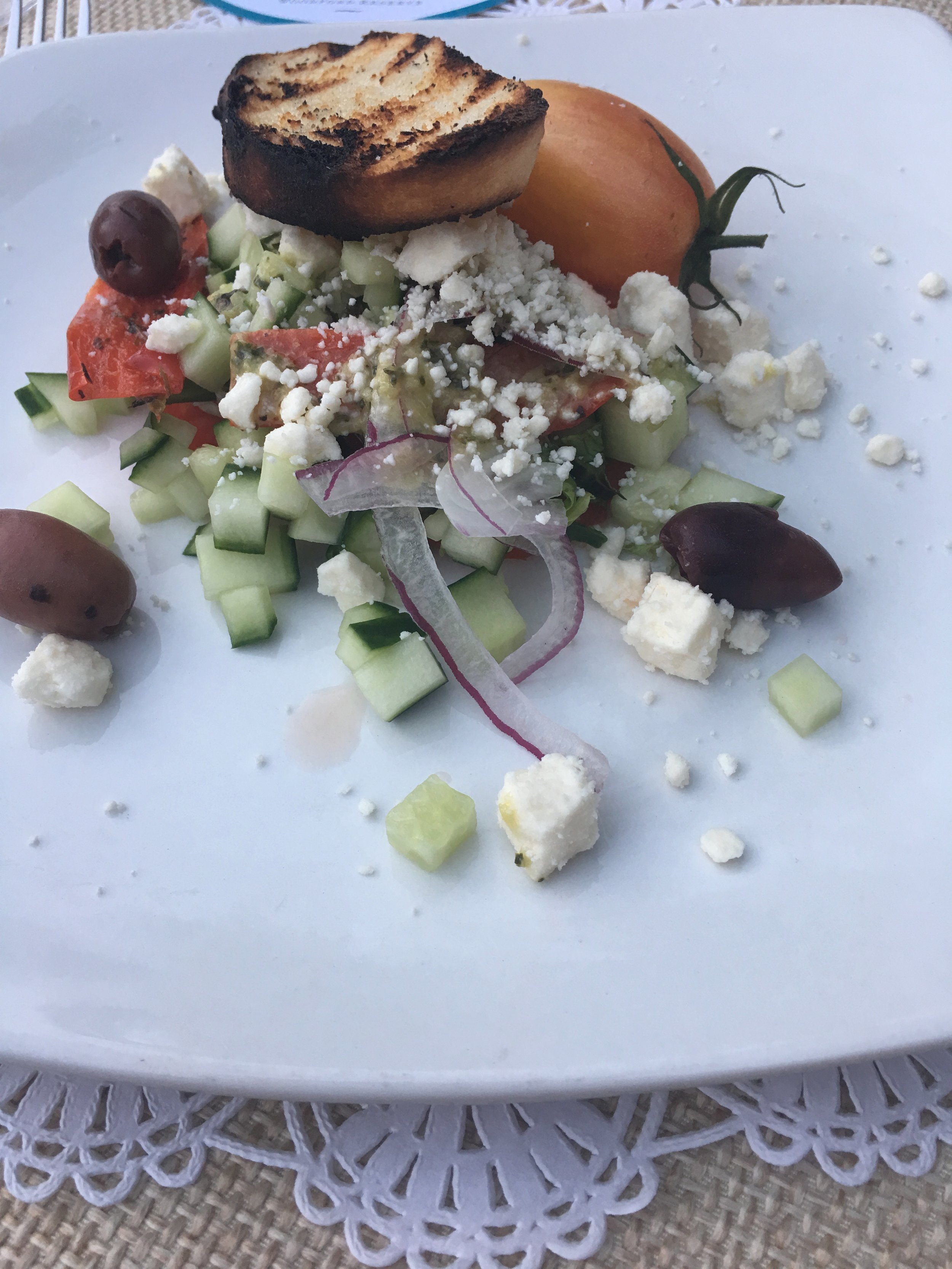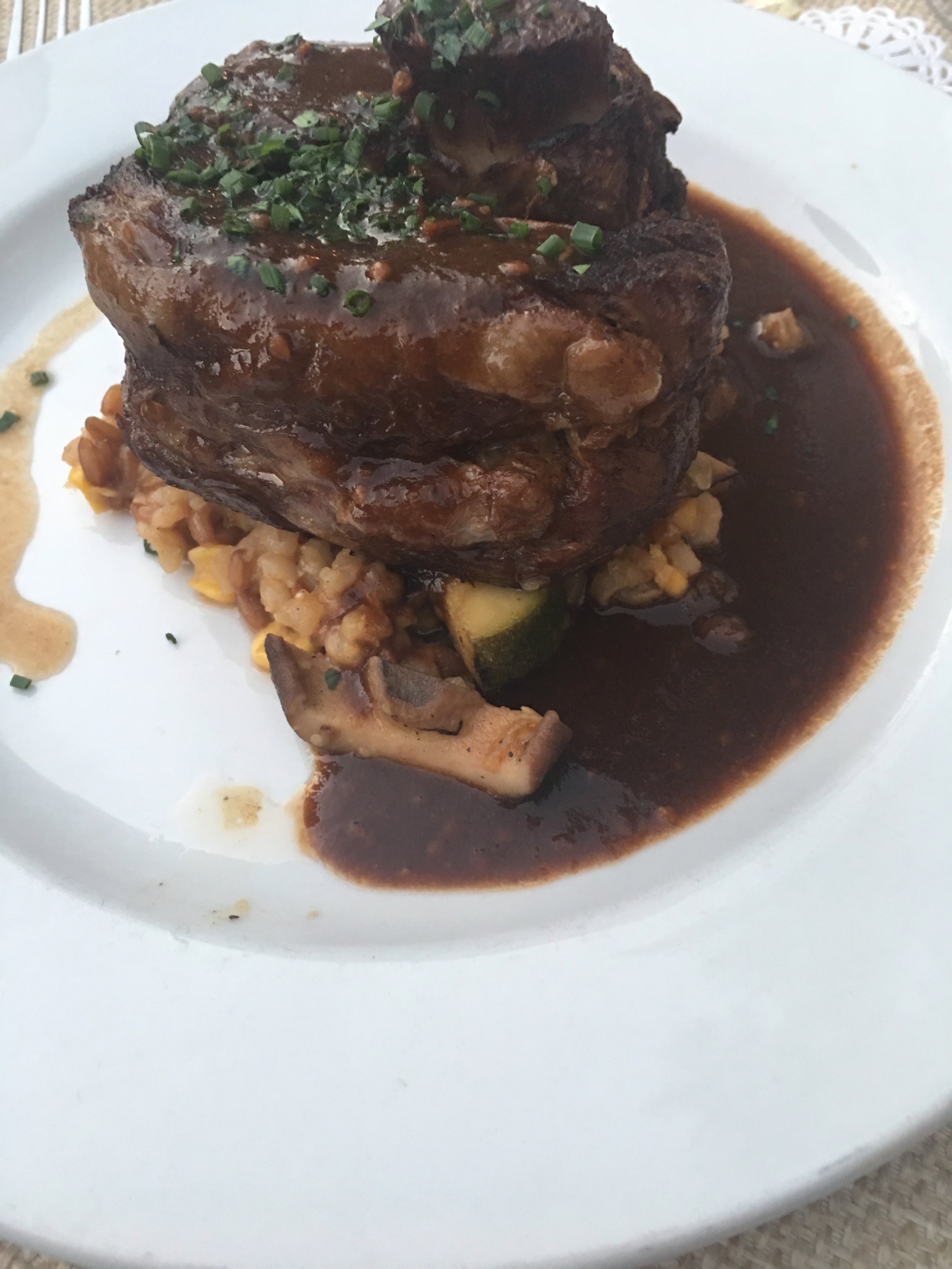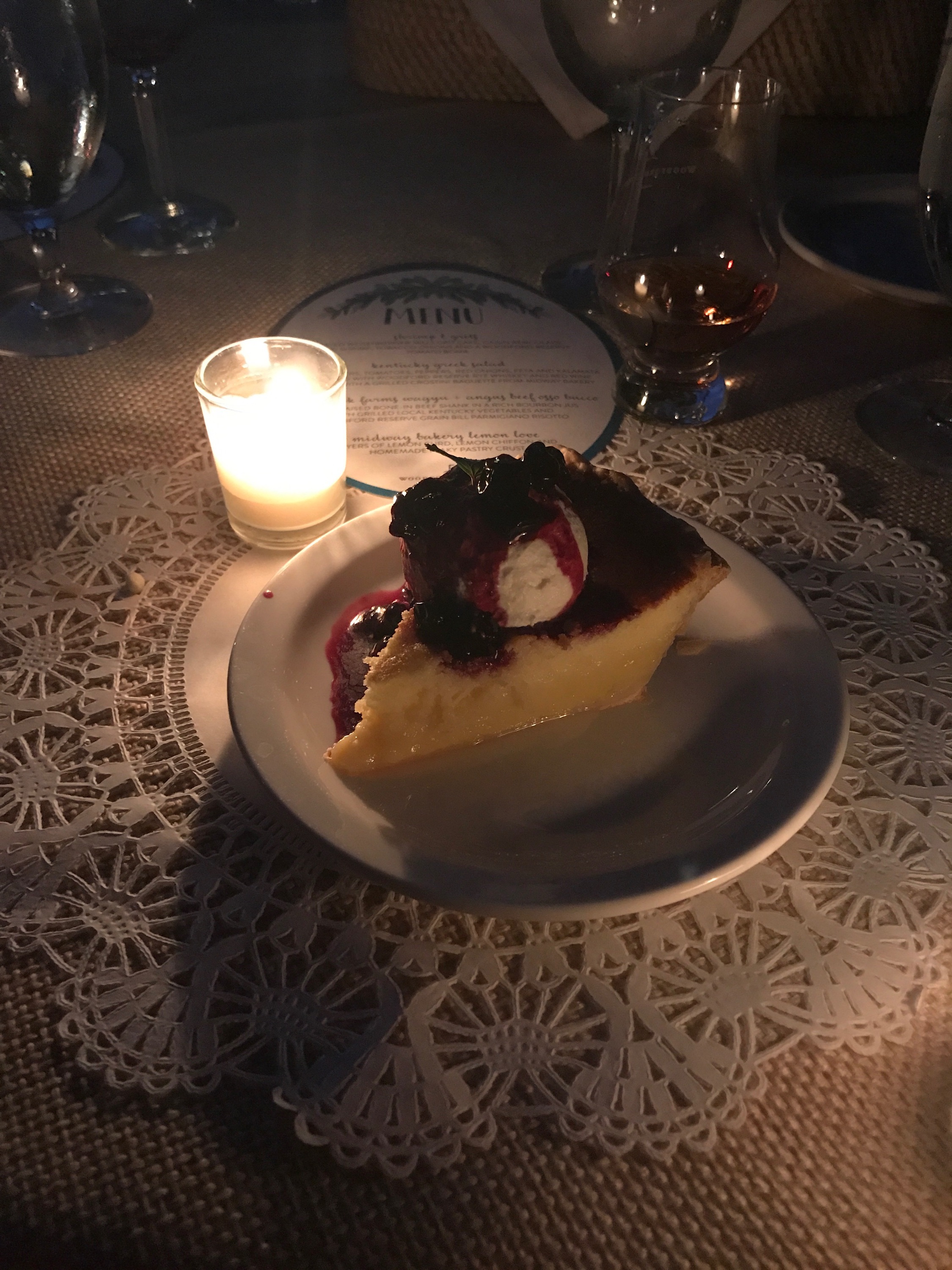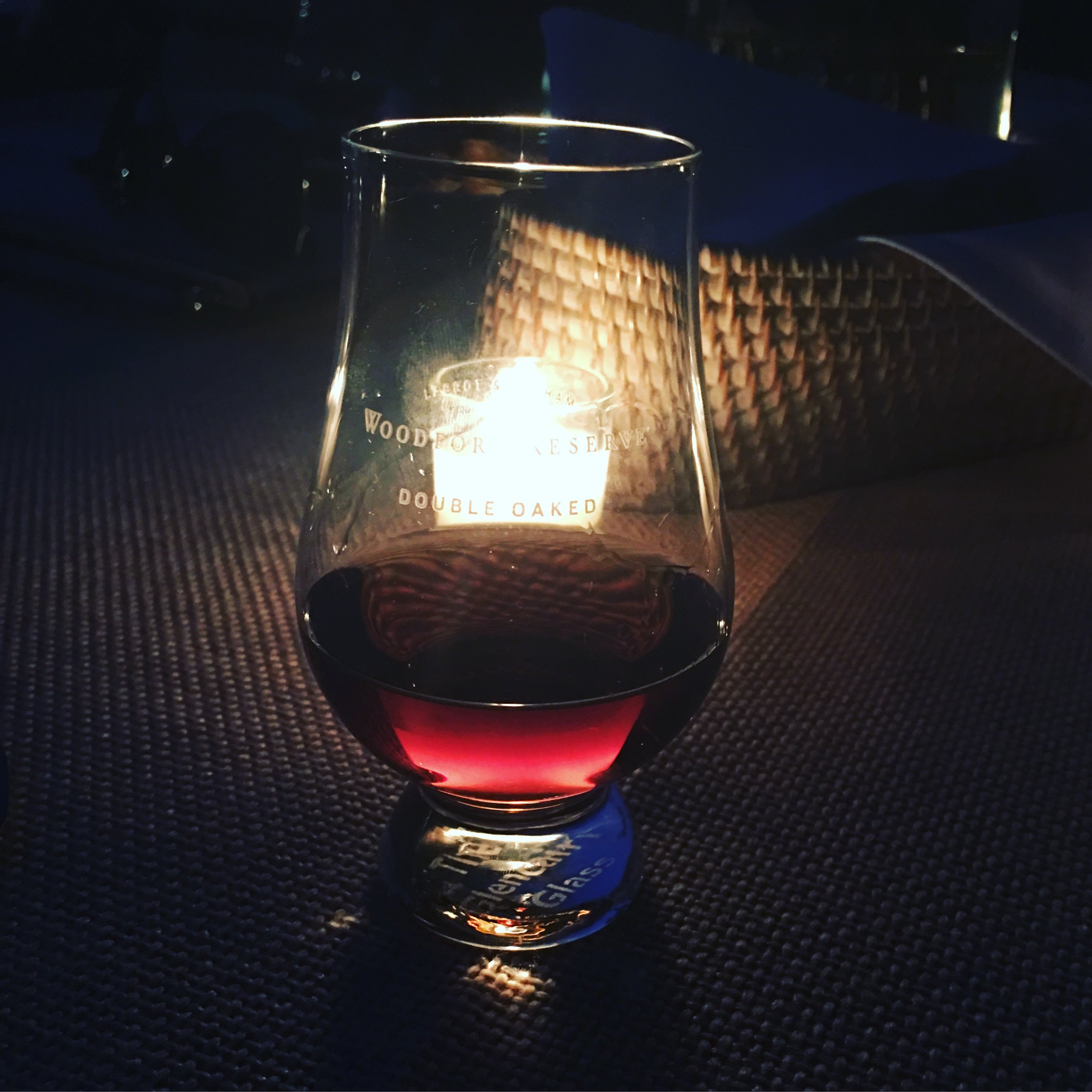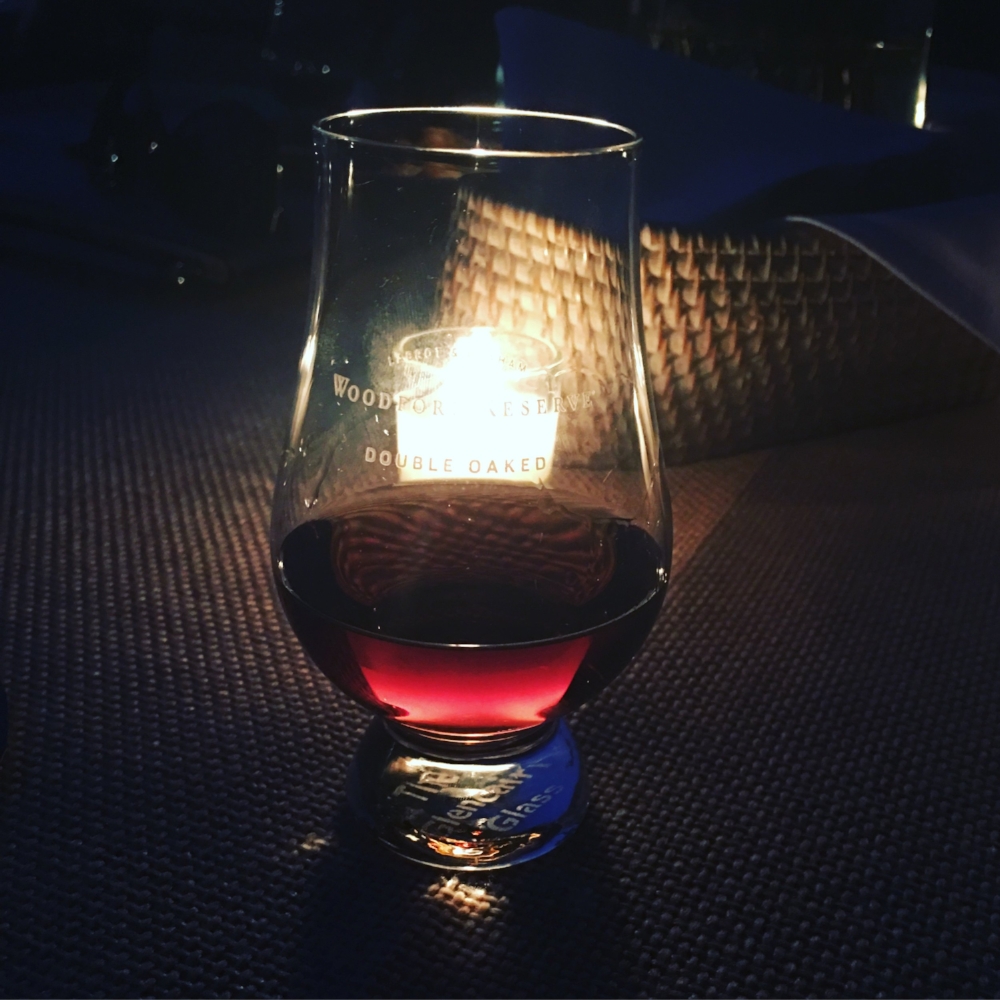How to Taste Bourbon Like a Pro
Step-by-step guide to tasting Kentucky bourbon
Kentucky bourbon is bigger than ever. Of course, 95% of the world’s bourbon is made here in the Commonwealth, as is 100% of the bourbon that’s worth talking about. It’s an $8.6 billion dollar industry that generates over 20,000 jobs for Kentuckians. Bourbon impacts every Kentuckian. But, no matter how hot the industry is, I’ve noticed that there are plenty of Kentuckians who are still a little scared to drink bourbon. It’s a question I get fairly often from blog readers and social media followers: How do I get started with tasting bourbon?
As a bourbon writer, I’ve had the incredible opportunity to attend tastings led by some of the most interesting names in bourbon. I’ve watched the legendary Fred Noe of Jim Beam demonstrate his “Kentucky Chew” technique, participated in an intensive sensory tasting session led by Elizabeth McCall and Chris Morris of Woodford Reserve, the masters of (click here for information on how you can attend Woodford Reserve Tasting Academy, which I promise you’ll want to attend!), and been among the very first media members to sample the most recent Angel’s Envy offerings. I’ve picked up a few tasting tips along the way, and I want to share them with y’all.
Setup:
Now, it’s great if you have the opportunity to go to a tasting led by a professional. If you’re in Louisville, there are great classes at Westport Whiskey and Wine. Lexington and Louisville both have fantastic classes at Total Wine and More. And, of course, there are tasting opportunities on all of the distillery tours. But, it’s also pretty cool to setup a tasting at home, so you can learn about your own palate as well as your friends’ and family’s.
Step 1: Select your Whiskey.
If you’re going to have a whiskey tasting, you’ll want to select a whiskey. Now, many Kentucky distilleries produce a bourbon and a rye. These are both types of whiskey, and can be produced using the same equipment. Absolutely NOTHING marks you as an amateur quicker than calling a rye whiskey a “bourbon.” If you take one thing away from this blog post, please remember that. The main difference is the grain content. Bourbon whiskey must have a recipe, known as a mash bill, of 51% corn or higher, while the mash bill of rye is at least 51% rye. I find that, when selecting whiskeys to taste, it’s good to pick a theme. I often go by distiller. When sampling the new Old Forester Rye, I tried it against the Old Forester Signature Bourbon, as well as the Woodford Reserve Rye, as these were all produced under the supervision of the same Master Distiller, Chris Morris, under the two major Brown-Forman labels. Another easy starting point would be to try Maker’s Mark with Maker’s 46 or Woodford Reserve with Woodford Reserve Double Oaked. These comparisons will show you how the very same bourbon develops a different taste when finished in different barrels. You can also choose a flight consisting of one from different categories — wheated, high-rye bourbon, rye, etc. — to really see the differentiations. There is a great guide to hosting a tasting on the Kentucky Distillers Association website, and all of the major brands have really good information on their websites to help you learn about what you’ll be tasting before you buy.
Step 2: Set it up.
There really is no tasting glass like the glencairn for tasting. The tulip-shaped glass helps you experience the aroma of the bourbon as it’s supposed to be. If you don’t want to invest in tasting glasses just yet, you can use rocks glasses. Set up each tasting station in the same order, pouring about an ounce of whiskey into each glass. We’re not here to take shots or get drunk. The idea is to have enough juice in each glass to get an idea of how it tastes. Set your samples out in ascending proof order, so that a higher proof won’t overwhelm the flavors of a lower-alcohol spirit.
Step 3: Accoutrements
Turns out, you actually do need a few more things on hand for a bourbon tasting than just bourbon and glasses. Who knew, right?!?! You’ll need some good quality, flavor-neutral water. Here in Louisville, the best thing is actually our award-winning tap water, but to paraphrase Ina Garten, bottled water is fine. The water serves both as a palate cleanser and, if needed, for a drop or two to dilute the spirits. Sometimes, after the initial taste of the whiskey, it’s nice to add a little water (no more than a drop or two) to cut the proof and really dig into the flavor.
You’ll also want some crackers, bread, or popcorn to serve as a palate cleanser while tasting. And, although we’re limiting the amount of alcohol that’s being consumed in the tasting, you’ll want to have some appetizers or snacks on hand to offset the intoxicating effect. It’s also interesting to try some different food samples with your whiskey tasting to coax different flavors out of the drink. The Woodford Reserve flavor wheel tasting calls for aged parmesan, toasted hazelnut, dried cranberry, an orange slice, dark chocolate, and sorghum. I often make some substitutions when playing around with food pairings: I like Kerrygold Dubliner cheese rather than parmesan, and often use fresh or dried cherries and toasted pecans — these are just my taste preferences, and serve a similar purpose in drawing different notes out of any whiskey, not just the Woodford expressions.
Tasting
So here’s the thing. You honestly already have the only tools you need for a bourbon tasting: your own taste buds and curiosity. The most important thing here is taking the time to really be in touch with the sensory experience. Don’t let yourself fall into the trap of liking what you’ve heard is good, what “the experts” like, or what the people around you say is good. You know what you enjoy. You know if you like Brussels sprouts or red meat or chocolate cake, right? Well, bourbon is no different. Different people have different palates and enjoy different spirits. At the heart of it, that’s how the bourbon industry came to be.
Step 1: Color
The first thing you’ll notice when approaching your bourbon samples for tasting will be the color. The color actually does play a huge role in the tasting experience. The shade of amber of a particular whiskey will often be determined by its proof, age, and degree of barrel char. The above photo is a great illustration of how color predicts the character of a bourbon. Two Coopers’ Craft expressions were made from the exact same mash bill. The original Coopers’ Craft is an 82.2 proof, aged in charred barrels, while the Coopers’ Craft Barrel Reserve is 100 proof and has been aged in a specially chiseled barrel. Both of these factors impact the color of the bourbon, and give you the first clues about how it will taste. Predictably, the sample on the right, the 100 proof, has a far bigger and more complex flavor.
Step 2: Aroma
Your sense of smell has a huge impact on any food or drink that you taste. To get a full sense of a bourbon’s flavor, you should take the time to give it a good sniff before you taste it. Now, to the beginner, the first notes you’ll smell in any bourbon whiskey will probably be vanilla and caramel. These are characteristics of all bourbon whiskeys; they are the result of aging the spirit in charred oak barrels. Sometimes these notes linger beyond your first whiff, and they’re still pretty wonderful. As you smell the spirit, you’ll probably pick up on some other notes, too. These are the result of the specific yeast strains, grain varietals, barrel chars, maturation techniques, and everything else that goes into making a specific whiskey. Pay attention to what you smell. There are no wrong answers. I find that most of the Brown-Forman brands have a really strong pear note. Maker’s Mark expressions smell like creme brûlée. Explore the aroma for yourself and note how smells you enjoy play into flavors you like. If a whiskey has a strong raisin note and you hate raisins, then you’re probably not going to enjoy that spirit. Also, it’s very interesting to see how different conditions — a hot or cold day, how you’re feeling, etc. — play into the aroma you experience for a whiskey. It’s very common to smell something different in the same whiskey on a different day, even for folks who have a highly trained and developed palate.
Step 3: Taste
We’ve spent a lot of time getting to this point, haven’t we. Especially since the goal was supposed to be tasting a whiskey. Well, here we are.
Take a sip. See how it tastes on different parts of your tongue. Really think about the flavors you’re pulling out of the whiskey. Pay attention to your initial, emotional responses. Maker’s Mark always tastes like Christmas to me, both because of its elegant caramel and vanilla notes, but also because of the sensory memory of my great-aunt’s bourbon balls, which she always made with Maker’s Mark. You may sense a nutty flavor or a fruity note; subsequent sips or dilution with water will probably help you figure out what kind of nut or fruit. . If you’re tasting with other folks, you may hear them talk about notes that you absolutely do not taste; this is absolutely normal. There are usually some big notes that everyone experiences, and then other flavors that are way more about the bourbon’s impact on the individual. Some of the most experienced Master Distillers and Master Tasters and bourbon pros I’ve ever met will tell you the same thing: There is no right or wrong way to taste, and everyone picks up on a little something different. Trust your palate and your experience more than reviews, price point, or prestige. I promise this will make you a happier bourbon drinker.
Step 4: Finish
Think about the flavor the whiskey leaves in your mouth after you swallow (or spit) it. Maybe there’s a cinnamon note, or citrus fruit. It’s the final impression of the whiskey, and it often is a little more complex than the first taste.
Step 5: Record it
So, this is totally optional, but I find that the best way to develop my taste in bourbon is to keep a tasting notebook. I use this one, which is popular among the bullet journal crowd. I find that keeping my notes organized helps me to really compare flavors and experiences. I can look back on what I tasted in a specific whiskey and see if I taste the same notes again. It’s a great way to help me recall what I’ve tasted and what flavors I’ve tasted. If you’re interested in taking up bourbon tasting as a semi-serious hobby, I recommend journaling it.
Cheers, y’all! Let me know in the comments if you’ve ever done a bourbon tasting at home or at a distillery!!
Old Forester Distillery
Louisville’s must-visit distillery tour
I’m frequently asked what I recommend on a short list of Louisville tourism destinations — where to go if you only have a day or two to spend in the Derby City. I also often hear folks wondering where to start their bourbon tourism education. The Old Forester Distillery is the perfect answer to both of those questions.
Old Forester was the first bourbon whiskey to be sold exclusively in sealed bottles, and it’s the oldest bourbon on the market. It was even produced during Prohibition for medicinal use. If you want a great primer on the history of Kentucky bourbon — sales, marketing, and production — you need to visit Old Forester.
At the turn of the 20th Century, the 100 block of Louisville’s Main Street was integral to Kentucky’s bourbon industry. Over the years, production and storage facilities moved to more spacious areas, with Whiskey Row revitalization efforts only arising over the past few years. Brown-Forman built the Old Forester Distillery on the site of the brand’s original headquarters, providing both a tourism facility and a working distillery on history Whiskey Row.
In addition to giving visitors an overview of how the bourbon is made, the Old Forester tour actually gives its guests a glimpse into the cooperage process. Brown-Forman, Old Forester’s parent company, is the only distilling company that makes its own barrels. This tradition is honored at OldFo, as you can actually watch barrels being constructed and charred as part of the tour.
Don’t miss the gift shop which offers the Whiskey Row series (the 1920 blend is fantastic!) and the Distillery-Exclusive President’s Choice single barrel blend!
The Old Forester Distillery is open for tours and shopping 7 days a week at 119 West Main Street in Louisville. The $16 tour includes a tasting for guests over 21. Click here for more tour details.
Maker's Mark and Keeneland
These iconic Kentucky brands enjoy a decades-old partnership.
Maker's Mark and Keeneland are two of Kentucky's most iconic traditions. I bet you've noticed that there's always plenty of Maker's Mark at the track, but did you know that these two brands have been paired up since the very beginning? In fact, the very first barrel of Maker's Mark was purchased by Keeneland in the mid-1950s. When Maker's launched their Private Select Barrel Program a few years ago, Keeneland was, once again, their first customer!
Of course, there are always plenty of opportunities to celebrate Maker's Mark at the track. The 2015 Breeders' Cup at Keeneland featured everything from signature Maker's Mark lounge areas to Maker's branded cocktails.
Bob makes his Breeders' Cup picks at Keeneland, Maker's Mark in hand.
And, then there are the bottles. Since 1997, Maker's Mark has collaborated with Keeneland to produce special collectors' bottles which benefit local charities. These are accompanied by signings at Keeneland, which are quite an event for bourbon lovers. This year's signing will be next Friday, April 13th, to coincide with the Maker's 46 Mile, a popular (G1) horse race. Perhaps the most iconic bottle in the collection is the Empty Bottle, the 2000 edition which was not filled because whisky supply was low at Maker's distillery due to a fire. Even with no bourbon inside, the bottle raised over $200,000 for the Tubby Smith Foundation!
There's even a signature Maker's Mark cocktail at Keeneland, The Keeneland Breeze. It's so citrusy and refreshing: it's 1.5 parts Maker's Mark to 1/2 part Triple Sec, topped with a splash of ginger ale and an orange round garnish.
I ran across these Keeneland Breeze kitchen items at The Keeneland Shop recently. What a fun way to celebrate the racetrack and its signature spirit!
Cheers and happy racing, y'all!
A Summer Evening with Woodford Reserve and Ben Sollee
A lovely evening of music, bourbon, and food at Woodford Reserve
A couple of weeks ago, my lovely friend Elizabeth McCall, Master Taster at Woodford Reserve, invited a group of our friends to visit the Distillery for a lovely summer evening of food, drinks, and music. It was the perfect Kentucky summer evening!
We started with a tour of the Distillery, where we learned about the grains -- corn, rye, and malted barley -- that go into the Woodford Reserve mash bill. We also learned a little about the yeast fermentation process, the distillation, and the maturation in charred barrels. One of my favorite things about distillery tours is the way that a very standardized process varies in small ways -- grain varietals, yeast recipes, wood type -- to produce very different bourbons. I always learn a little something new, even at distilleries I've visited before. This time, Elizabeth explained the barley-malting process to me!
Another fun fact I learned on this tour is that while we typically assume that all Kentucky bourbon stills were produced by Louisville-based Vendome Copper & Brass Works, the iconic triple stills at Woodford Reserve were actually produced by Scotland's Forsyths of Rothes, the company that produces stills for many famous Scotch whiskeys. The Woodford Reserve stills had recently been shined up and were extra-pretty for our tour!
There's nothing like a trip through a rickhouse. Getting a whiff of the "angel's share" just never gets old!
We then sat down to an amazing dinner prepared by Woodford Reserve chef de cuisine Nat Henton who is, in the words of Ouita Michel, Woodford's chef in residence, "one hell of a chef." The four course meal didn't disappoint. Shrimp and grits made a perfect appetizer, while the greek salad with local heirloom tomatoes and a Woodford Rye-infused salad dressing was amazing. The main course was osso bucco with a Woodford Reserve jus and, in the most creative and tongue-in-cheek touch, a Woodford Reserve Mash Bill risotto! We finished with a dessert of Midway Bakery Lemon Love, a light and delicious lemon curd pie. The entire evening was paired with cocktail and wine selections -- very well-timed and moderated for responsible enjoyment and flavor enhancement! After the event, Elizabeth introduced our group to Chef Nat; he was so cool and humble, and we learned that his family farm is on the road to Woodford Reserve!
One of the coolest touches of the evening was that Kentucky native singer-songwriter-cellist Ben Sollee provided music for the event. Ben actually had dinner at our table. It was so wonderful to talk with Ben, he's so funny and personable and knowledgeable. We had a really great conversation about the problematic origins of My Old Kentucky Home, and how the song has evolved. I may have embarrassed a couple of my dining companions by asking Ben what holler his family is originally from; turns out that his roots are in Whitley County's hollers!
As Ben played our state song, I sipped on our after-dinner drink, Woodford Reserve Double-Oaked, and thought of my own Kentucky Home in the hollers of Floyd County. I thought of my grandfather, who played old-timey mountain music on a Martin guitar. Maybe I just had my grandpa, who always kept those little yellow butterscotch candies around, on my mind, or maybe the temperature hit the whiskey differently. Whatever the reason, I pulled a really strong butterscotch note for the very first time on the Double-Oaked, a bourbon I've tried several times before. It was truly a perfect Kentucky evening!
Fred Noe and Bruce Russell at Forecastle Bourbon Lodge
Forecastle Festival Fireside Chat features Bourbon Family Icons Fred Noe and Bruce Russell.
This weekend's Forecastle Festival was so fun, y'all. In addition to the musical lineup, the Bourbon Lodge featured some rockstars of the spirits industry. On Saturday, Bob and I took in the Bourbon Family Icons Fireside Charm, which was moderated by author Fred Minnick, and which featured Fred Noe, the great-grandson of Jim Beam and the current Master Distiller at his family's whiskey company, as well as Bruce Russell, the grandson of legendary Wild Turkey Master Distiller Jimmy Russell.
Now, I've spent the majority of the last year interviewing and researching folks in the bourbon industry for my book. I still get extremely starstruck when I'm in the room with Mr. Noe or Bill Samuels Jr of Maker's Mark and I know it would be the same if I had the opportunity to meet Jimmy Russell. These old-school bourbon guys -- the ones who don't try to speak corporate lingo and for whom the family bourbon label is a source of heritage and pride -- well, they're just the best of Kentucky.
One of the most fascinating aspects of the bourbon industry is, as Mr. Noe mentioned during the Fireside Chat, that many of the historical bourbon producing families are friends. In fact, many times during this session, Mr. Noe referenced his own friendship with Bruce Russell's father, Eddie. Both men referenced drinking the other's whiskeys. It's one of my favorite aspects I've seen in researching the bourbon industry: there really is a camaraderie and a sense that it's better if they all succeed.
Oh, and one more fun fact from the Fireside Chat: Mr. Noe name-checked his buddy Bobby Ritchie, better known to the rest of us as Jim Beam aficionado Kid Rock. It was at once surreal and hilarious.
Here's to a great experience in the Forecastle Bourbon Lodge. I can't wait to check out next year's lineup!
National Bourbon Day!
June 14th celebrates Kentucky's native spirit! Cheers to good Kentucky bourbon!
Happy National Bourbon Day, y'all!
Of course, I joke that every day here in Kentucky is a Bourbon Day. If you're writing a book about bourbon, like I currently am, you certainly think about brown spirits every day, even if you imbibe them far less frequently.
It really is a fascinating time to be a Kentucky bourbon lover. There are 1.5 barrels of bourbon for every Kentuckian, and the bourbon industry is an 8.5 billion dollar industry here in the Commonwealth. There are bourbon-themed menus, festivals, and cocktails for nearly every taste! (P.S.: Check out the Bourbon & Beyond Lineup! I'm beyond excited to attend!)
The truth is, with all the amazing distillery tours and new releases and cocktail bars, it's also sometimes an overwhelming time to be a Kentucky bourbon lover. Are the big-name, big-price tag pours worth it? Should you save special bottles for your collection? Should you mix a cocktail, add a splash of water, or drink it straight? I have to say that, in the past several years of writing about bourbon, I've heard that question asked a million different ways. And, the real experts -- those who've spent their careers blending the perfect whiskeys -- always come around to a very similar response. In fact, I've heard a variant of these very words from Jim Beam Master Distiller Fred Noe and Woodford Reserve Master Taster Elizabeth McCall. Here you go, folks. the secret to drinking bourbon, courtesy of HerKentucky.com.
Drink your bourbon however you like it.
Let me know in the comments: What bourbon are you drinking today, and how are you drinking it?
Kentucky Derby Mint Julep Party
Catstudio Kentucky Derby dish towel from High Street Fly. | Woodford Reserve julep cup from Woodford Reserve Gift Shop. | Kentucky Derby 143 Official Mint Julep Glass | Louisville Stoneware julep cups from Maker's Mark and Buffalo Trace Distilleries.
The mint julep is the signature drink of the Kentucky Derby. It's also one of the most maligned and misunderstood. A julep can be a lovely and refreshing cocktail when you use good bourbon, a fresh simple syrup and just-picked mint sprigs.
The first step to a great julep party is variety. Set up tasting stations so your guests can sample juleps made from different bourbon expressions. It's a great way to determine how the drink works for your palate. Some folks swear a julep needs to be in the traditional silver cup, others want a traditional Derby Glass, and some of us love the feel of a Louisville Stoneware Julep Cup. (The Stoneware cups are my favorite because they keep your drink cold without the condensation of a metal cup!
Bar towels from Maker's Mark and Woodford Reserve Distilleries. Rose garland from Etsy seller thekindpilot.
You're bound to have some guests who don't want a julep -- there's always that Kentuckian -- so stock some bourbons and ryes that are good for sipping or for making other, less Derby-approved cocktails.
Decorate with red roses and horseshoes and serve a couple of traditional munchies. I like a Derby Pie® and some Benedictine sandwiches cut in fun shapes!
To learn more about the mint julep, visit the Kentucky Derby Book website, where you'll see a video of Woodford Reserve's Chief Entertainment Officer Tim Laird making the perfect mint julep and read more about the classic mint julep cocktail with Woodford Reserve Master Taster Elizabeth McCall.
The Kentucky Derby by Bill Doolittle is a wonderful companion to the Greatest Two Minutes in Horse Racing. The book's Digimarc technology allows you to experience live video of Derby races, Derby fashion, and traditions like the mint julep directly on your smartphone! You can buy the hardback coffee table book here, or you can download the eBook from Amazon or iTunes.
(This post was sponsored by the Kentucky Derby Book. All opinions are my own.)





















